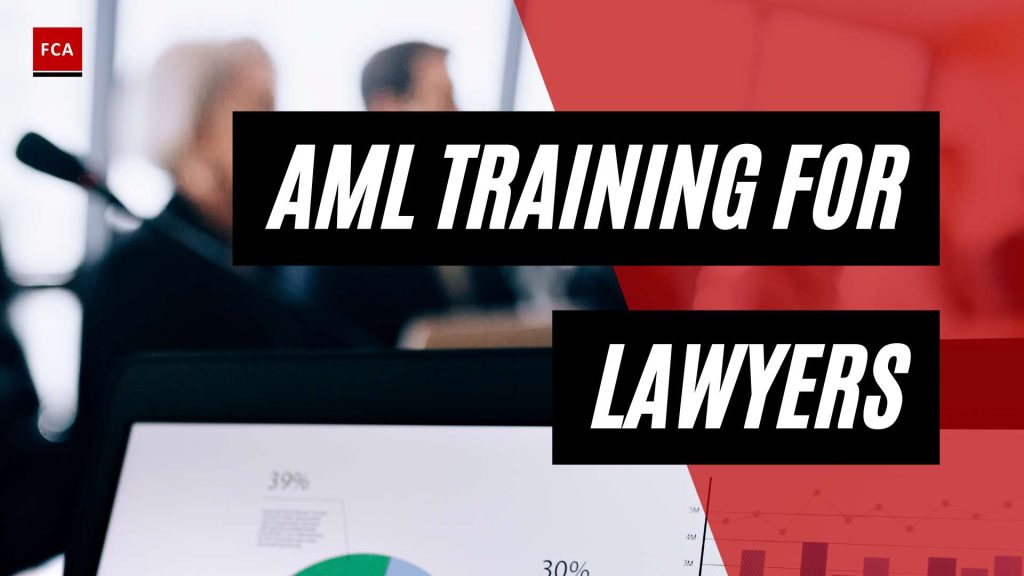Understanding AML Training
AML training for lawyers plays a critical role in combating money laundering and ensuring the integrity of the legal profession. It is essential for lawyers to understand their obligations and responsibilities in preventing money laundering and terrorist financing. Global AML training standards have been established to guide lawyers in meeting these requirements and to promote consistency in anti-money laundering efforts.
Importance of AML Training for Lawyers
Anti-money laundering (AML) regulations are in place to prevent the illicit flow of funds and protect the global financial system. Lawyers, as gatekeepers of financial transactions and legal services, have a vital role to play in detecting and deterring money laundering activities. AML training equips lawyers with the knowledge and skills necessary to recognize suspicious transactions and activities, understand their reporting obligations, and follow the appropriate procedures when encountering potentially illicit cases.
Failure to comply with anti-money laundering regulations not only exposes lawyers to legal and reputational risks but also undermines the integrity of the legal profession. By undergoing comprehensive AML training, lawyers can effectively contribute to the fight against money laundering, safeguard their clients’ interests, and uphold the highest ethical standards.
Global AML Training Standards
Recognizing the importance of AML training for lawyers, various jurisdictions have implemented AML training requirements to ensure compliance with international standards. For example, the European Commission published the “Anti-Money Laundering and Countering the Financing of Terrorism (AML/CFT) for lawyers” users’ manual in March 2022 to assist lawyers in understanding their obligations under the European Union’s anti-money laundering laws. This manual aims to enhance lawyers’ ability to identify suspicious transactions, comprehend their role in combating money laundering and terrorism financing, and navigate the procedures when encountering suspicious cases (European Commission).
In the United Kingdom, the Solicitors Regulation Authority (SRA) requires law firms to provide appropriate AML training to their staff. This training ensures that all employees understand AML rules and their responsibilities in preventing money laundering. Law firms are obligated to offer AML training to both new and existing staff members, with a recommended frequency of at least every two years (Lexology).
By adhering to global AML training standards, lawyers can stay up to date with the latest regulatory requirements, enhance their ability to identify and report suspicious activities, and contribute to the overall effectiveness of anti-money laundering efforts.
In the next section, we will explore the specific AML training requirements for lawyers in different jurisdictions, including the European Union and the United Kingdom.
AML Training Requirements for Lawyers
To combat money laundering and enhance the integrity of the legal profession, lawyers are subject to specific AML training requirements in various jurisdictions. These requirements aim to ensure that lawyers have the necessary knowledge and skills to identify and prevent money laundering and terrorist financing activities. In this section, we will explore the AML training guidelines and requirements for lawyers in the European Union, the UK, and Canada.
European Union AML Training Guidelines
The European Union (EU) has recognized the need for AML training for lawyers and has published guidelines to help them understand their obligations under anti-money laundering laws. The “Anti-Money Laundering and Countering the Financing of Terrorism (AML/CFT) for lawyers” users’ manual was released by the European Commission in March 2022 to provide comprehensive guidance.
In the EU, lawyers are required to conduct Client Due Diligence (CDD) and Enhanced Due Diligence (EDD) on their clients as part of their responsibilities to prevent money laundering and terrorist financing. This includes identifying the beneficial owners of legal entities and understanding the purpose and intended nature of the business relationship (European Commission).
Failure to comply with anti-money laundering regulations not only exposes lawyers to legal and reputational risks but also undermines the integrity of the legal profession (European Commission).
UK Solicitors Regulation Authority Requirements
In the United Kingdom (UK), the Solicitors Regulation Authority (SRA) sets out specific AML training requirements for solicitors. The SRA expects solicitors to have a thorough understanding of the risks associated with money laundering and terrorist financing and to be able to apply effective measures to mitigate those risks.
The SRA requires law firms to establish and maintain appropriate risk-based policies and procedures, including regular AML training for all staff involved in regulated activities. The training should cover topics such as recognizing money laundering red flags, understanding legal obligations, and identifying Politically Exposed Persons (PEPs) (Sanction Scanner).
By adhering to the SRA’s AML training requirements, solicitors can demonstrate their commitment to preventing money laundering and terrorist financing activities and maintain compliance with the regulatory expectations.
Canadian AML Law Compliance Program
In Canada, lawyers are subject to anti-money laundering (AML) requirements under the Proceeds of Crime and Terrorist Financing Act. The Financial Transactions and Reports Analysis Centre of Canada (FINTRAC) enforces Canadian AML Law and has released comprehensive guidance on compliance program requirements.
Canadian law firms must establish a comprehensive and effective compliance program that incorporates five essential elements specified by FINTRAC. These elements include the development and implementation of written policies and procedures, the appointment of a compliance officer, ongoing training for employees, conducting risk assessments, and reporting suspicious activities to FINTRAC.
Compliance with AML regulations is closely monitored through audits conducted by FINTRAC and regulatory examinations by the Office of the Superintendent of Financial Institutions (OSFI). Non-compliance with AML requirements can result in significant financial penalties and reputational damage for law firms (Osler).
By adhering to the Canadian AML Law compliance program requirements, law firms can effectively contribute to the prevention and detection of money laundering and terrorist financing activities in Canada.
Understanding the AML training requirements in the European Union, the United Kingdom, and Canada is essential for lawyers to fulfill their obligations in the fight against money laundering and terrorist financing. By staying updated on these requirements and implementing effective AML training programs, lawyers can play a crucial role in safeguarding the integrity of the legal profession and the financial system as a whole.
Key Elements of AML Training
When it comes to AML training for lawyers, several key elements are crucial for effectively combating money laundering and ensuring compliance with global AML regulations. These elements include recognizing money laundering red flags, understanding the legal framework and obligations, and identifying politically exposed persons (PEPs).
Recognizing Money Laundering Red Flags
One of the essential aspects of AML training is enabling lawyers to recognize potential money laundering red flags. By understanding the signs and indicators of suspicious transactions and activities, lawyers can play a vital role in detecting and preventing money laundering.
AML training should provide lawyers with knowledge and practical examples of common red flags, such as:
- Unusual or complex transactions with no apparent legal or economic purpose.
- Transactions involving high-risk jurisdictions or individuals.
- Multiple transactions just below the reporting threshold.
- Frequent large cash transactions without a reasonable explanation.
- Transactions involving inconsistent or false information.
By being aware of these red flags, lawyers can exercise increased vigilance when dealing with clients and transactions, enabling them to report suspicious activities appropriately and mitigate the risks associated with money laundering.
Understanding Legal Framework and Obligations
Lawyers must have a solid understanding of the legal framework and obligations related to anti-money laundering. Jurisdictions worldwide have implemented AML laws and regulations to combat money laundering and terrorist financing effectively.
AML training for lawyers should cover:
- The specific AML laws and regulations applicable to their jurisdiction.
- The requirements for client due diligence (CDD) and enhanced due diligence (EDD).
- The obligations related to identifying and verifying the identities of clients and beneficial owners.
- The reporting obligations for suspicious transactions and activities.
- The implications of non-compliance and the potential legal and reputational risks.
By understanding the legal framework and obligations, lawyers can ensure that they are fulfilling their responsibilities and meeting the required standards to prevent money laundering within their practice.
Identifying Politically Exposed Persons (PEPs)
Another critical element of AML training for lawyers is the identification of politically exposed persons (PEPs). PEPs are individuals who hold prominent public positions or have close associations with such individuals. They are considered to be at higher risk of involvement in money laundering activities.
AML training should provide lawyers with guidance on:
- Recognizing indicators that may suggest a client is a PEP, such as holding a high-ranking government position or being associated with PEPs.
- Understanding the importance of conducting enhanced due diligence (EDD) when dealing with PEPs.
- Complying with the additional regulatory requirements and scrutiny associated with PEPs.
- Implementing appropriate risk-based procedures to assess and manage the risks associated with PEPs.
By effectively identifying and managing the risks associated with PEPs, lawyers can contribute to the prevention of money laundering and ensure compliance with AML regulations.
By incorporating these key elements into AML training programs for lawyers, legal professionals can enhance their ability to detect and prevent money laundering activities effectively. This, in turn, helps maintain the integrity of the legal profession and contributes to the global fight against financial crime.
Implementing Effective AML Training
To ensure effective AML (Anti-Money Laundering) training for lawyers, law firms need to consider several key elements. These include developing firm-specific policies and procedures, enhancing training effectiveness, and promoting continuous learning and updates.
Firm-Specific Policies and Procedures
Standard AML training for lawyers should go beyond the basics and incorporate firm-specific policies, controls, procedures, and real-life scenarios. By tailoring the training to the specific needs and risks faced by the law firm, lawyers can gain a deeper understanding of their AML obligations and how to apply them in their daily practice.
Law firms can supplement their training materials with free online resources, such as YouTube videos and articles, to provide additional insights and practical examples. By incorporating firm-specific policies and procedures into the training, lawyers can better grasp the relevance and application of AML requirements within their specific organizational context.
Enhancing Training Effectiveness
To enhance the effectiveness of AML training, law firms should conduct regular file audits to identify any repeat offenders or weaknesses in specific areas such as client due diligence or risk assessments. These audits can provide valuable insights for improving the training program and targeting the areas that require additional focus.
Focused training sessions can be designed to address specific weaknesses identified during the file audits. By emphasizing compliance throughout the organization and stressing the significance of AML obligations, law firms can create a culture of vigilance and prioritize compliance in their daily operations (Access Group).
Continuous Learning and Updates
AML training for lawyers should go beyond the recommended training every 12 to 24 months. It is essential to keep staff up to date with emerging risks, scams, and regulatory developments through regular AML-related updates. This continuous learning approach ensures that lawyers are aware of the latest trends and techniques used by money launderers and can adapt their practices accordingly.
Regular updates can be provided through various channels, such as internal newsletters, training sessions, or online platforms. By fostering a culture of continuous learning and staying updated on AML-related developments, law firms demonstrate their commitment to vigilance and compliance (Access Group).
By implementing effective AML training that includes firm-specific policies and procedures, enhances training effectiveness, and promotes continuous learning and updates, law firms can ensure that their lawyers are well-equipped to meet the AML requirements and contribute to a strong compliance culture within the organization.
Role of Compliance Officers
Compliance officers play a crucial role in ensuring adherence to Anti-Money Laundering (AML) regulations within legal practices. They are responsible for overseeing AML compliance efforts, collaborating with AML officers, and maintaining effective compliance measures. Let’s explore the role of compliance officers in more detail.
Compliance Officer for Legal Practice (COLP)
The Compliance Officer for Legal Practice (COLP) holds a pivotal role in supervising AML compliance within law firms. Their responsibilities include understanding AML regulations, overseeing the Money Laundering Reporting Officer (MLRO) and Money Laundering Compliance Officer (MLCO), and ensuring robust compliance measures are in place through effective collaboration with AML officers (Access Group).
As the designated COLP, they act as a point of contact for internal and external stakeholders regarding AML compliance matters. They are responsible for establishing and maintaining a strong compliance culture within the organization, ensuring that all employees are aware of their AML obligations, and receiving and reviewing suspicious activity reports.
Supervising AML Compliance
Compliance officers are responsible for supervising AML compliance efforts within legal practices. They ensure that the firm’s AML policies and procedures are implemented effectively and in accordance with regulatory requirements. This involves conducting regular risk assessments, identifying vulnerabilities, and implementing appropriate controls to mitigate the risk of money laundering and terrorist financing.
Compliance officers monitor the firm’s compliance with AML regulations, review internal reporting systems, and conduct periodic internal audits to identify any weaknesses or deficiencies in the AML program. They also collaborate closely with the MLRO and MLCO to ensure that the firm’s AML program is robust and aligned with regulatory expectations.
Collaboration with AML Officers
Effective collaboration between compliance officers and AML officers is essential for a strong AML program. Compliance officers work closely with AML officers to develop and implement comprehensive AML training programs (Volkov Law). They ensure that employees involved in compliance reporting, information gathering, and escalation procedures receive the necessary training to fulfill their AML obligations (Volkov Law).
Compliance officers collaborate with AML officers to establish effective communication channels within the organization. This includes providing guidance on reporting requirements, ensuring information is effectively communicated to necessary personnel, and facilitating the exchange of AML-related information. By working together, compliance officers and AML officers can strengthen the firm’s AML program and enhance its ability to detect and prevent money laundering and terrorist financing activities.
Compliance officers play a vital role in promoting a culture of compliance within legal practices. Their supervision of AML compliance efforts, collaboration with AML officers, and focus on implementing effective compliance measures contribute to the overall effectiveness of the firm’s AML program. By staying informed about regulatory requirements and industry best practices, compliance officers ensure that the firm remains compliant and upholds the integrity of the legal profession.
Importance of Policy Review and Updates
To ensure compliance with anti-money laundering (AML) regulations, law firms must prioritize regular policy review and updates. This practice is essential for aligning with money laundering regulations, avoiding compliance gaps, and meeting regulatory expectations.
Aligning with Money Laundering Regulations
AML regulations are constantly evolving to address emerging money laundering risks and combat illicit financial activities. Law firms must stay updated with these regulations and ensure that their policies and procedures align with the latest requirements. Regular policy review allows firms to identify any gaps or inconsistencies in their current AML practices and make necessary adjustments to comply with the evolving regulatory landscape.
By aligning with money laundering regulations, law firms demonstrate their commitment to preventing the abuse of the financial system for illegal activities. This not only helps protect their clients but also safeguards the reputation of the legal profession as a whole.
Avoiding Compliance Gaps
Failing to comply with AML regulations can have significant financial and reputational repercussions for law firms. Penalties may include fines, and in severe cases, firms could risk losing their operating licenses. Therefore, regular policy review is crucial to identify any potential compliance gaps and take corrective measures to address them.
Law firms face money laundering risks due to various factors, including vulnerabilities in their systems, lack of due diligence, infiltration of criminal elements within the firm, and inadequate identity checks. Criminals might exploit these weaknesses to carry out illicit activities through law firms. By conducting regular policy reviews, firms can strengthen their AML defenses, minimize the risk of non-compliance, and protect themselves and their clients from the consequences of money laundering.
Meeting Regulatory Expectations
AML regulations and requirements for law firms are governed by various laws and acts, such as the Money Laundering Regulations 2007, the Proceeds of Crime Act 2002, and the Terrorism Act 2000. Compliance with these regulations is essential for law firms to fulfill their obligations and maintain the integrity of the financial system.
Regular policy review ensures that law firms are aware of the latest regulatory expectations and can make necessary updates to their AML training programs, policies, and procedures. By meeting regulatory expectations, law firms demonstrate their commitment to combating money laundering, protecting their clients, and maintaining the highest professional and ethical standards.
In summary, regular policy review and updates are crucial for law firms to align with money laundering regulations, avoid compliance gaps, and meet regulatory expectations. By prioritizing policy review as part of their AML training programs, law firms can enhance their ability to prevent money laundering activities, protect their clients and their reputation, and contribute to the integrity of the legal profession.








